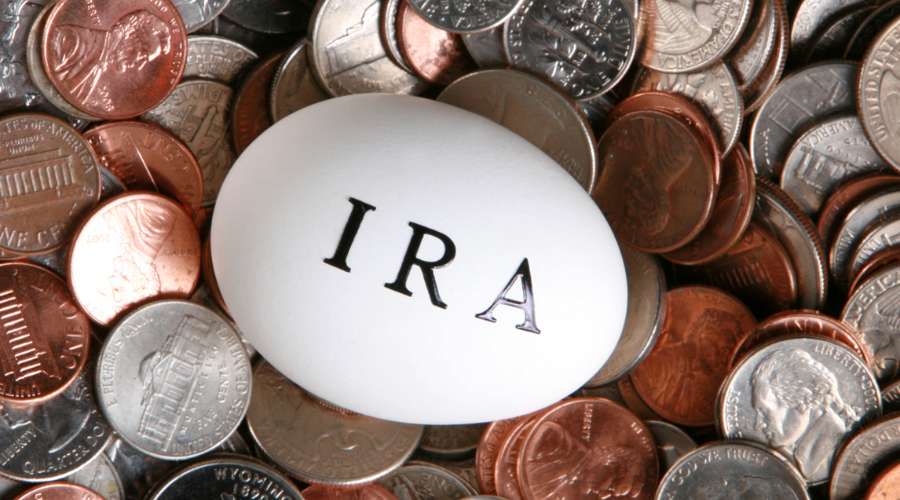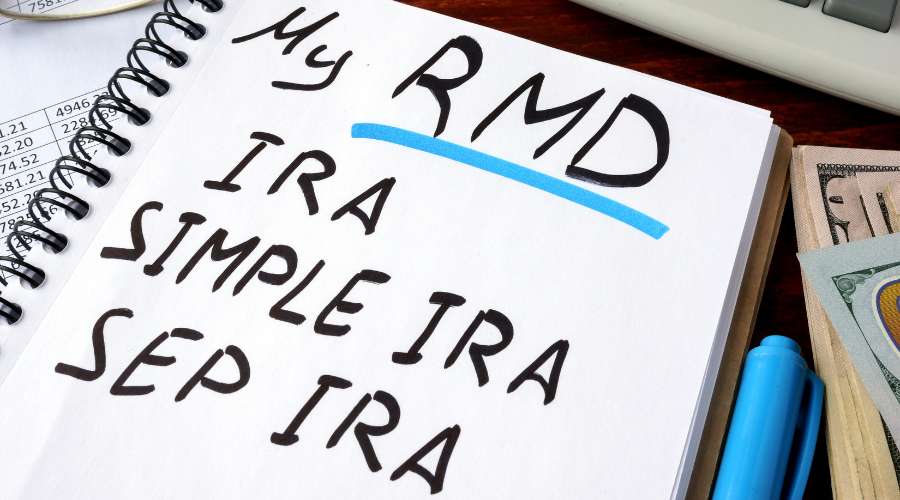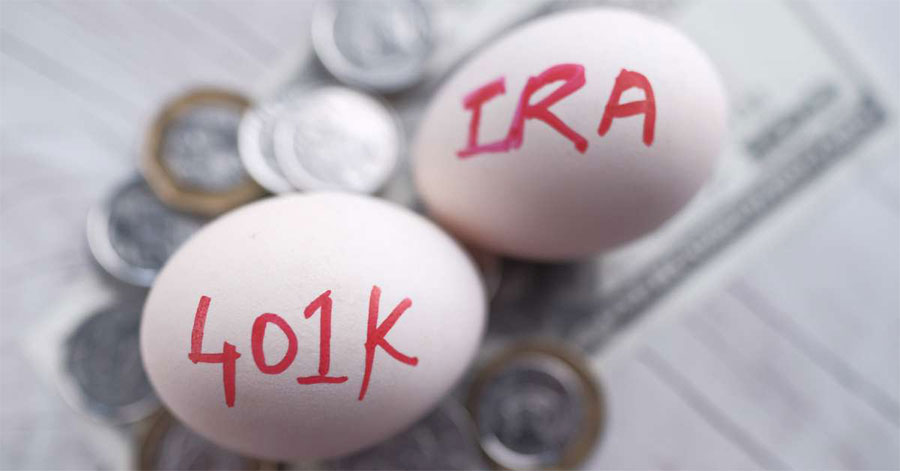Gold can be a smart financial move, providing stability and potential for growth. With the introduction of the Common Gold IRA, investors can now diversify their retirement accounts with gold and other precious metals.
You need to be aware of many potential loopholes to ensure you make the most of your investment. Knowing the rules and regulations surrounding the Gold IRA and the potential pitfalls is essential for successful investing.
In this article, we will explore the ins and outs of the Gold IRA and discuss the various loopholes you need to be aware of. Knowing what to look for and what to avoid can help you make the most of your gold investment.
If you are interested in investing, make sure to take a look at our highest recommended companies for this year!
>> Click Here For A List Of The 5 Highest Recommended Precious Metals Investment Companies <<
An Overview of Gold Investment

Gold has been used for currency and wealth storage since ancient times. First discovered in Egypt, it quickly became an integral part of human culture, with its value and beauty coveted worldwide. Gold has recently become a popular investment vehicle among individuals and corporations.
Gold is a precious metal that's prized for its durability and rarity. It also has a long history of being used as a form of money, with many countries basing their currency on it until the 20th century. Gold has also been used to store wealth by kings and other powerful figures throughout history.
Gold is still a popular investment option due to its low risk and potentially high returns. Supply and demand, geopolitical events and inflation determine gold prices.
When investing in gold there are several different types of investments. Physical gold, such as coins and bullion, is the most popular form of gold investment. Coins and bullion are easy to store and many investors like the tangible aspect of owning something they can hold. Gold coins and bars come in various sizes, from small 1-gram bars to large 100-ounce bars.
Another option is gold ETFs or mutual funds, which are investment products that track the price of gold. These are great ways to invest in gold without the hassle of buying and storing physical gold. Gold ETFs and mutual funds are easy to buy and sell and offer a convenient way to diversify your portfolio.
Gold futures and options are other forms of gold investment. These contracts allow you to buy or sell gold at a set price at a future date. Futures and options are complicated instruments, so they are best suited for experienced investors who understand the risks involved.
You can also invest in gold mining stocks. These stocks give you a stake in the companies that mine and produce gold. While this type of investment can be volatile, it can also provide good returns if the gold market does well.
What Is a Gold IRA

A gold IRA (Individual Retirement Account) is a special retirement account that allows you to hold physical gold and other precious metals in an account instead of stocks, bonds or mutual funds. It's a great way to diversify your retirement portfolio and provide additional stability for your retirement savings.
Gold IRAs have been around since 1997 when Congress passed the Tax Payer Relief Act. This allowed individuals to roll over their existing 401(k) accounts into a Gold IRA tax-free. It opened the possibility of investing in gold and other precious metals to protect their retirement savings.
In 2004, the American Jobs Creation Act made it even easier to open a Gold IRA by allowing investors to directly transfer funds from an existing IRA into a Gold IRA without paying taxes or penalties. This made it much simpler for investors to diversify their portfolios and add an extra layer of protection to their retirement savings.
Gold IRAs are growing in popularity today as more and more investors look for ways to diversify their portfolios and protect their retirement savings. With the increased volatility of the stock market and the ever-changing economic landscape, many investors are turning to Gold IRAs as a haven for their retirement funds.
Types of Gold IRA Accounts

When it comes to gold IRA accounts, there are a few different types you can choose from. Knowing which is right for you will depend on your situation and goals.
Traditional Gold IRA
This type of IRA allows for pre-tax contributions and all profits earned from the investments are tax-deferred until you begin taking distributions. This means you will not pay any taxes on capital gains until you withdraw funds at retirement.
The maximum annual contribution limit is the same as for a regular IRA – $6,500 ($7,500 if you are 50 or older). You can also choose to use a broker or custodian to manage your Traditional Gold IRA and take care of the paperwork associated with enrolling in and managing the account.
Contributions to a Traditional Gold IRA are made as regular contributions or rollovers. Regular contributions include making annual deposits into the IRA while rollovers involve transferring funds from another retirement account such as a 401(k) or 403(b). Rollovers must be completed within 60 days of the initial distribution to avoid taxes and penalties.
Withdrawals from a Traditional Gold IRA are allowed after reaching the age of 59 ½. The IRS does not allow for the withdrawal of gold coins or bars, so the gold must be sold and the proceeds can be withdrawn from the account. Withdrawals are subject to ordinary income tax and may also be subject to a 10% penalty if taken before the age of 59 ½.
Roth Gold IRA
A Roth Gold IRA is a type of retirement account that offers tax-free growth and tax-free withdrawals for retirement. With a Roth Gold IRA, you can invest in physical gold, silver, platinum and palladium and your investments will grow tax-free as long as they remain in the account.
This means you can accumulate wealth over time without paying taxes on your gains or income. You can also withdraw your Roth Gold IRA tax-free when you reach retirement age.
You can make qualified distributions at any age without paying taxes or penalties. Qualified distributions are generally those taken after the account holder has reached 59 ½ years of age or in the event of death, disability or certain other special circumstances. Non-qualified distributions, such as those taken before the account holder reaches 59 ½, will incur taxes and penalties.
SEP Gold IRA
A SEP (Simplified Employee Pension)Gold IRA is a great way to invest in gold and other precious metals while also taking advantage of the tax benefits that come with an Individual Retirement Account (IRA). A SEP Gold IRA allows you to make contributions to the account up to 25% of your gross income or $66,000, whichever is lower.
It also offers tax deferment, meaning that any money you make from investments made through the SEP Gold IRA will not be taxed until you withdraw it.
You can withdraw from the SEP Gold IRA at any time; however, if you do so before you reach age 59 ½, you may face a 10% penalty from the IRS unless you meet certain exceptions. In addition, withdrawals are subject to mandatory 20% withholding for federal taxes.
Defining Gold IRA Loophole
Gold IRA Loophole is a term some investors have used to describe using a self-directed individual retirement account (IRA) to purchase gold and other precious metals. The idea is that when gold or other precious metals are held in an IRA, the investor can benefit from the tax advantages associated with IRAs and the potential for growth that comes with investing in physical assets.
The loophole allows you to roll over funds from a traditional IRA or 401(k) into a Self-Directed IRA, allowing you to invest in stocks, bonds, mutual funds, real estate, gold, and other precious metals. You have full control over the assets you choose to invest in with your IRA and can make changes to your investment holdings at any time.
What Are the Common Gold IRA Loopholes You Can Take Advantage Of?

If you're looking to get the most out of your gold IRA, there are some common loopholes and strategies you can take advantage of! Here are some helpful tips to get you started.
Inheritance Benefits: One final loophole to take advantage of when investing in a gold IRA is the ability to pass on the investments to your heirs. Any profits from your investments can be passed on to your children or grandchildren, making it a great way to save for the future.
Use a Self-Directed IRA (SDIRA)
A SDIRA is a type of retirement account in which you can choose any investments the IRS allows. That means you can invest in gold, silver, platinum and palladium coins and bars, as well as other precious metals. With a SDIRA, you have complete control over which assets you want to own and how much of each asset you want to buy.
The best part about using a SDIRA for your gold IRA is that you benefit from all the same tax benefits of a traditional IRA but with greater control over your investments. You don't need to worry about the government telling you what investments you can and cannot make—it's all up to you. You can diversify your portfolio beyond just gold and silver coins and bars if you choose.
Another advantage of a SDIRA is that it allows you to purchase physical gold and silver coins and bars, giving you the added assurance and security of owning the metal. This is in contrast to investing in paper gold or silver, which only exposes you to the metal without actually owning it.
With a SDIRA, you can make contributions more easily. Unlike a regular IRA, you can contribute up to $6,500 yearly or $7,500 if you are 50 or older. This makes it easier to build up your Gold IRA and take advantage of all the benefits of investing in gold and other precious metals.
Use A Roth Solo 401(K)
A Roth Solo 401(k) allows you to contribute to a traditional IRA and a Roth IRA, allowing for both pre-tax and after-tax contributions. This can diversify your retirement savings and reduce your overall taxes. With a Roth Solo 401(k), you can also take advantage of the fact that you can contribute up to the annual contribution limit of $22,500 per year.
A Roth Solo 401(K) allows you to borrow up to 50% of your balance or $50,000, whichever is less, for qualified expenses such as purchasing a home or educational expenses. This gives you extra financial security and flexibility, allowing you to use your retirement savings for important life events.
Use A Roth IRA Conversion
With a Roth IRA conversion, you can convert all or a portion of your existing traditional IRA into a Roth IRA. This allows you to take advantage of the tax-free growth potential that a Roth IRA offers.
The biggest advantage of a Roth IRA conversion is that you can make post-tax contributions to your account. This means that when you withdraw funds from your account in retirement, you won't have to pay taxes on them. You can also use the conversion to diversify your retirement portfolio with tangible assets such as gold and silver.
You can also roll over funds from other qualifying retirement plans into your gold IRA. This allows you to take full advantage of the tax benefits associated with a gold IRA. You'll also benefit from accessing your funds without penalty or taxation.
There are also certain strategies to take advantage of the tax-deferred growth of a gold IRA. For instance, you can split large contributions into smaller ones, allowing you to spread your tax liability over several years. Additionally, you can make strategic withdrawals throughout your retirement to minimize the amount of taxes you owe.
Follow IRS Guidelines and Understand Tax Implications of a Gold IRA
The IRS regulations provide several special benefits when it comes to gold IRAs. These include tax deductions, rollover rules and more. It is important to understand these rules and follow them carefully to exploit these loopholes.
First, you should know that gold IRAs are taxed differently than other investments. Consider this when deciding how much money to invest. The tax rate for gold IRA investments is much lower than those of traditional investments, so you may consider investing more into your gold IRA than you would with other investments.
Second, many investors overlook the rollover rules. If you have a 401k or another retirement savings plan, you can roll over part or all of it into a gold IRA. This can be done without incurring any taxes or penalties. You can also roll over funds from an existing IRA into a gold IRA. Again, no taxes or penalties will be applied.
Finally, you can take advantage of special tax deductions when investing in gold IRAs. These deductions may include contributions to the IRA, investment expenses, and interest payments. Be sure to check with your accountant to see which deductions you may qualify for.
Purchase Only Approved Coins and Bullion for Your IRA
Certain rules and regulations must be followed to protect your investments when investing in a Gold IRA. One of these rules is that only approved coins and bullion may be purchased for your IRA. This ensures you get the highest quality gold for your retirement savings, preventing you from buying items you may not appreciate over time.
When selecting gold for your IRA, it is important to look for coins and bullion approved by the Internal Revenue Service (IRS). These coins and bullion must meet specific standards of purity and weight to be accepted into an IRA. Specifically, all gold must contain at least 99.5% pure gold and all bars must weigh 1 kilogram or more.
It is also important to remember that only certain types of gold are allowed in a Gold IRA. These include American Eagle coins, Canadian Maple Leaf coins, South African Krugerrands and Austrian Philharmonics. These coins are all approved by the IRS and are widely recognized as being of the highest quality in terms of gold content.
Additionally, some gold bullion bars are also allowed in a Gold IRA. These bars must meet the standards set forth by the London Bullion Market Association. They must also be produced by an LBMA-approved refinery and have the correct markings to indicate their weight and purity.
How Do You Open a Gold IRA Account
Opening a gold IRA account is easy and can provide numerous benefits. Here are the steps you need to take to open your own gold IRA account:
1. Choose A Gold IRA Provider
The first step is finding a reputable Gold IRA provider to help you set up your account. Make sure the provider is reputable and offers competitive rates.
2. Select Your Gold
Once you've chosen a gold IRA provider, it's time to select the gold you'd like to invest in. You can invest in bars, coins or other precious metals. Make sure you choose gold that meets the IRS standards for purity.
3. Fill Out the Paperwork
You will then be asked to fill out the appropriate paperwork. This includes paperwork related to the type of gold you invest in and information about your financial goals and risk tolerance.
4. Fund Your Account
After you've filled out the paperwork, you will need to fund your account. You can do this through a bank transfer or a check.
5. Store Your Gold
Once you've funded your account, your gold IRA provider will store your gold on your behalf. The gold will be stored securely and monitored by your gold IRA provider.
Bottom Line
Investing in a gold IRA can be an incredibly smart move for your future financial security! Unsurprisingly, many people are taking advantage of the existing loopholes and investing in our highly recommended companies. Gold has a long track record of being a valuable asset and you can rest assured that it will continue to remain a great investment option for years to come.
When investing in a gold IRA, you'll enjoy many benefits. For one, you'll be able to diversify your portfolio and hedge against inflation. Gold is also known for its liquidity and ability to retain its value over time. Moreover, gold IRAs offer tax advantages that other investments don't, so you can maximize your returns.
Finally, when investing in a gold IRA, you'll want to ensure you use a reliable company. We strongly advise you to invest with our highly recommended companies. They have a long history of success and can provide you with the best advice and support. They offer competitive rates and fees, so you can rest assured that you're getting the most bang for your buck.
Don't forget to check out our top recommended companies before investing!
